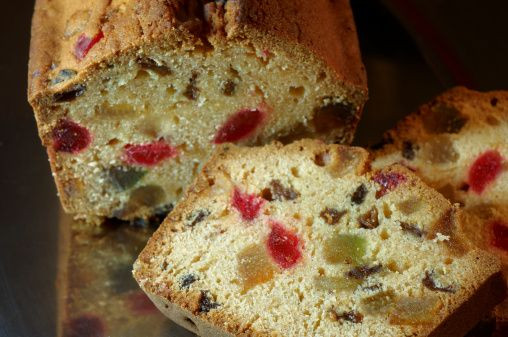100-Year-Old Antarctic Fruitcake Is 'Almost' Edible

The Antarctic Heritage Trust found a nearly edible 100-year-old fruitcake in the oldest building in Antarctica, according to reports Thursday.
Conservators with the Antarctic Heritage Trust found the fruitcake among artifacts from the Terra Nova Expedition led by British explorer Robert Falcon Scott between 1910 and 1913. The fruitcake is one of about 1,500 artifacts discovered in a building in Cape Adare, an Antarctic peninsula.
Researchers said the brand of the fruitcake is Huntley & Palmers. They found it inside an iron tin and wrapped in paper. "The cake itself looked and smelled (almost) edible" and was in "excellent condition," the researchers claimed.
Read: Amateur Collectors Stumble Upon Japan’s Oldest Diving Fossil Bird
“The cake probably dates to the Cape Adare-based Northern Party of Scott’s Terra Nova expedition,” the trust said. “It has been documented that Scott took this particular brand of cake with him at the time.”
No doubt this will spark debate about who likes fruit cake...@InspireExplore conservators find 106 yr old fruit cake in hut in #antarctica pic.twitter.com/2RdvgTJ8BB
— Antarctic Heritage (@InspireExplore) August 10, 2017
Scott’s team took shelter in the Cape Adare building during their expedition and left the fruitcake. Researchers began investigating the building in 2015.
“Fruitcake was a popular item in English society at the time, and it remains popular today.” Lizzie Meek, conservation manager for artifacts at the trust, told National Geographic in an email. “Living and working in Antarctica tends to lead to a craving for high-fat, high-sugar food, and fruitcake fits the bill nicely, not to mention going very well with a cup of tea.
“With just two weeks to go on the conservation of the Cape Adare artifacts, finding such a perfectly preserved fruitcake in amongst the last handful of unidentified and severely corroded tins was quite a surprise. It’s an ideal high-energy food for Antarctic conditions, and is still a favorite item on modern trips to the Ice.”
Read: These Organisms Are Eating Greenhouse Gases In Antarctica
After discovering the cake, conservators performed procedures to restore it, including rust removal and taking measures to stabilize the paper wrapping and tin container.
“Deacidification of the tin label and some physical repair to the torn paper wrapper and tin label was carried out,” the Trust said.
After the procedures, the cake and all the artifacts found will be returned to the site.
© Copyright IBTimes 2024. All rights reserved.





















